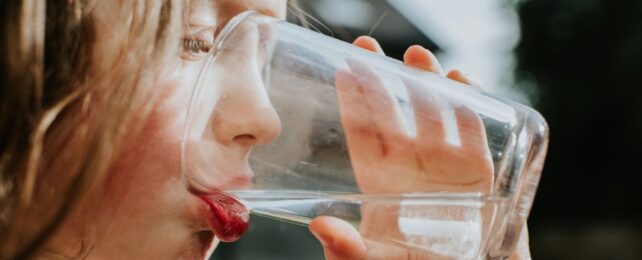Tiny pieces of plastic are an increasingly big problem. Known as microplastics, they originate from clothing, kitchen utensils, personal care products, and countless other everyday objects. Their durability makes them persistent in the environment – including in human bodies.
Not only are many people on Earth already contaminated by microplastics, but we're also still being exposed every day, as there is minimal regulation of these insidious specks.
According to a new literature review, a significant portion of our microplastic exposure may come from drinking water, as wastewater treatment plants are still not effectively removing microplastics.
Roughly 9 billion metric tons of plastic have been produced globally since plastic production began, much of which has progressively degraded into ever-smaller fragments without truly breaking down, forming a fine plastic dust that now pervades the planet.
These small particles, measuring 5 millimeters across or smaller, are now widespread in soil and water around the world. Wastewater treatment plants actually do remove a lot of this, the new study indicates, but not enough.
"What our systematic literature review found is that while most wastewater treatment facilities significantly reduce microplastics loads, complete removal remains unattainable with current technologies," says senior author Un-Jung Kim, environmental engineer at the University of Texas at Arlington (UTA).
"As a result, many microplastics are being reintroduced into the environment, likely transporting other residual harmful pollutants in wastewater, such as bisphenols, PFAS and antibiotics."
"These microplastics and organic pollutants would exist in trace levels, but we can get exposure through simple actions like drinking water, doing laundry, or watering plants, leading to potential long-term serious human health impacts such as cardiovascular disease and cancer."
The review suggests one important hurdle is the lack of a universal definition for what counts as a microplastic, plus the absence of standardized methods for measuring its presence in water.
"We found that the effectiveness of treatments varies depending on the technology communities use and how microplastics are measured to calculate the removal rates," says lead author Jenny Kim Nguyen, environmental chemist at UTA.
"One way to better address the growing microplastics issue is to develop standardized testing methods that provide a clearer understanding of the issue," she adds.
Nguyen is currently working to help establish such methods, a key step in addressing the daunting threat to public health posed by microplastics.
"This work helps us understand the current microplastics problem, so we can address its long-term health impacts and establish better mitigation efforts," says co-author Karthikraj Rajendiran, analytical chemist at UTA.
While much remains unknown about the effects of microplastics on ecological and human health, the signs so far are generally not good.
Previous studies have revealed evidence of their toxic effect throughout the food web, although more research is still needed to clarify what exactly all this microplastic is doing to our bodies and ecosystems.
There are indications it can lead to inflammation, oxidative stress, immune responses, and cancer, with highly variable health effects depending not just on the type and amount of microplastic, but also the presence of additional toxicants hitching a ride on these fragments.
One recent study found high microplastic concentrations in arteries of stroke patients, raising further alarm about the potential health effects as these contaminants accumulate in vital organs.
More broadly, there are concerns microplastic pollution could disrupt photosynthesis on a large scale, with predictably dire results.
In the absence of stronger regulation of microplastics, consumers are largely left to fend for themselves. Armed with the right information, however, it is possible to significantly cut back on exposure.
One important point to remember, for example, is that microfibers represent a major portion of microplastic pollution, many of which come from clothing made of synthetic materials.
"While communities must take steps to improve microplastic detection and screening at the wastewater and water quality monitoring, consumers can already make a difference by choosing to buy clothing and textiles with less plastics whenever feasible, knowing that microfibers are the most common microplastic continually released through wastewater," Kim says.
The study was published in Science of the Total Environment.
